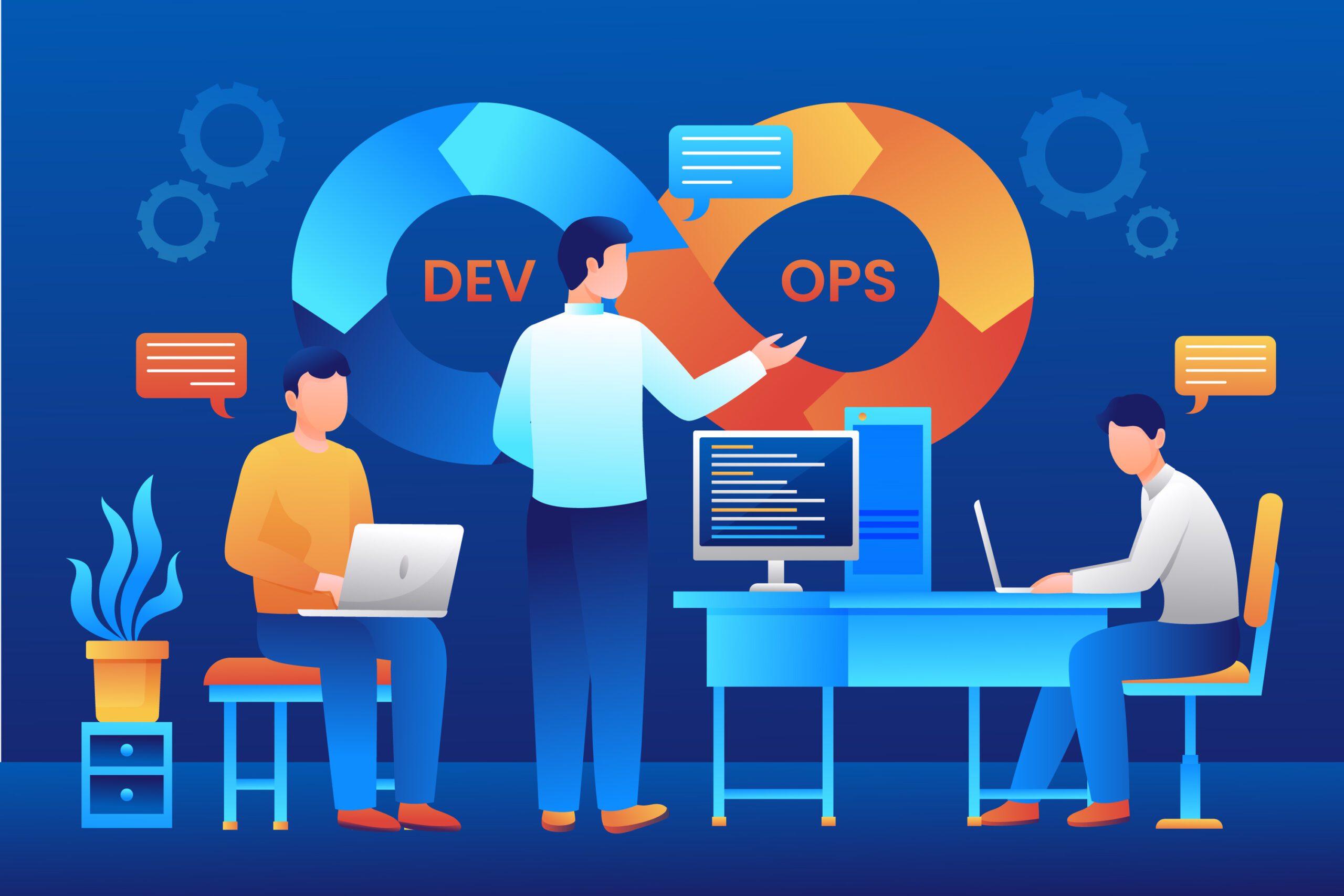The Rise of DevOps: Bridging the Gap Between Development and Operations
In today’s fast-paced digital landscape, organizations are constantly seeking ways to accelerate software development and improve operational efficiency. This has led to the emergence and rapid adoption of DevOps, a collaborative approach that bridges the gap between development and operations teams. DevOps has revolutionized the software development life cycle, enabling organizations to deliver high-quality applications at a faster pace. In this blog post, we will delve into the rise of DevOps, explore its key principles, highlight its benefits, and discuss its role in transforming the way businesses build and deploy software.
The Evolution of DevOps
To understand the rise of DevOps, it’s crucial to trace its origins back to the challenges faced by traditional software development methodologies. In the past, development and operations teams often worked in silos, leading to communication gaps, slower release cycles, and a lack of collaboration. As software systems became more complex and the need for faster innovation grew, a new approach was needed. DevOps emerged as a response to these challenges, emphasizing close collaboration, automation, and continuous delivery.
Key Principles of DevOps
DevOps is built on a set of core principles that guide its implementation and success. These principles include:
Collaboration: DevOps encourages collaboration and communication between development, operations, and other relevant teams to foster shared goals and responsibilities.
Automation: Automation plays a crucial role in DevOps, enabling organizations to streamline processes, reduce manual errors, and achieve greater efficiency.
Continuous Integration and Delivery (CI/CD): DevOps promotes the continuous integration of code changes and the rapid delivery of software updates, ensuring faster time to market and improved customer satisfaction.
Infrastructure as Code (IaC): Treating infrastructure as code allows organizations to manage and provision resources in a more flexible, scalable, and repeatable manner.
Monitoring and Feedback: DevOps emphasizes the importance of real-time monitoring, logging, and feedback loops to identify and resolve issues quickly.
Benefits of DevOps
The adoption of DevOps brings numerous benefits to organizations of all sizes. Some of the key advantages include:
Improved Collaboration and Communication: DevOps breaks down the barriers between development and operations teams, fostering better collaboration and communication. This alignment of goals and shared responsibilities leads to increased efficiency, productivity, and a sense of shared ownership among team members.
Faster Time to Market: By adopting DevOps practices such as continuous integration and delivery, organizations can significantly reduce the time it takes to develop and release software. This accelerated software development lifecycle allows businesses to quickly respond to market demands, stay ahead of competitors, and deliver new features and updates to customers in a timely manner.
Enhanced Quality and Reliability: DevOps places a strong emphasis on automated testing, monitoring, and feedback loops. By incorporating these practices throughout the development process, organizations can ensure higher-quality software with fewer bugs and faster bug resolution. This leads to improved customer satisfaction, reduced downtime, and a more reliable software experience.
Scalability and Flexibility: DevOps, coupled with infrastructure-as-code and cloud technologies, provides organizations with the ability to scale their systems easily. The automated provisioning and management of resources allow for efficient resource utilization, enabling organizations to meet changing business needs and handle increased workloads without compromising performance.
Cost Optimization: DevOps brings cost optimization benefits by automating manual processes, minimizing human errors, and reducing infrastructure costs. By optimizing resource utilization and eliminating wasteful practices, organizations can achieve significant cost savings. Additionally, the faster time to market and enhanced quality resulting from DevOps practices can translate into improved revenue and a competitive advantage in the market.
Continuous Improvement and Learning: DevOps fosters a culture of continuous improvement, encouraging teams to learn from failures, embrace innovation, and iterate on processes. Through regular retrospectives, feedback loops, and data-driven insights, organizations can continuously refine their development practices, identify bottlenecks, and implement optimizations that lead to ongoing operational excellence.

The Role of DevOps in Digital Transformation
DevOps plays a crucial role in digital transformation initiatives undertaken by organizations. As businesses strive to stay competitive and adapt to the rapidly evolving digital landscape, DevOps enables them to embrace agility, innovation, and continuous improvement. By breaking down silos between development and operations teams, DevOps fosters collaboration, streamlines processes, and promotes the efficient delivery of software products and services. It empowers organizations to respond quickly to market demands, leverage automation, and cloud technologies, and optimize resource utilization. With its focus on continuous integration, delivery, and feedback loops, DevOps enables organizations to drive successful digital transformations, deliver value to customers at a faster pace, and stay ahead in the digital age.
Conclusion
The rise of DevOps has transformed the way organizations develop, deploy, and maintain software applications. By bridging the gap between development and operations, DevOps promotes collaboration, automation, and continuous delivery, enabling organizations to achieve faster time to market, enhanced quality, and improved customer satisfaction. As businesses continue to embrace digital transformation, the adoption of DevOps will remain crucial to their success in the ever-evolving digital landscape. By embracing this collaborative and agile approach, organizations can bridge the gap between development and operations and drive innovation at a rapid pace.





